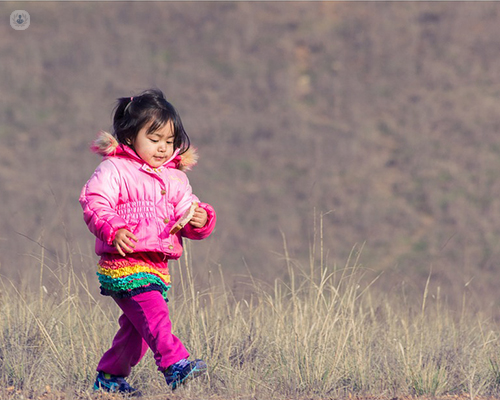Variations of gait in children: walking with feet
Written by:One aspect that usually draws attention to the children's gait is the direction in which they point their feet; The majority of the population walks with their feet pointing in front or slightly outwards, but some push them too far out and many others walk more than normal. This is often associated with very frequent falls, due more to their motor immaturity than to the position of their feet, which increases the concern to correct it and avoid future problems.
All these walking variations are known by childhood traumatologists as rotational alterations of gait , but more than alterations are variations more or less exaggerated from normal, which generally improve spontaneously as the child grows.
Why children walk or push feet
Occasionally, the shape of the feet may be the cause of the alterations, but in most cases the response is not in the feet. The physical examination of the child traumatologist is fundamental to rule out any underlying underlying pathology and to locate the origin of the rotational alteration.
Usually the orientation of the feet is due to the shape of the bones of the legs: the femur and the tibia. These bones have a rotation about their own axis that varies from one person to another depending on their genetics. If any of the bones are more rotated inwards the feet will point inwards; And likewise outwards.
The rotation of the femur on its axis is called femoral anteversion; If the rotation has an internal value greater than the average it is an increased femoral anteversion and the feet point inwards. On the other hand, when the rotation is more external we speak of decreased femoral anteversion or femoral retroversion and the feet point outwards. With the tibia the same can occur, may present an internal tibial torsion or an external tibial torsion that will condition the orientation of the foot.
Growth solves gait disturbances
Children have an internal rotation of femur and tibia greater than that of adults. This is why it is more frequent to see children who put their feet. In fact, this internal rotation of the femur makes them able to sit in position of W. With growth, both the femur and the tibia are rotating outwards, so that the feet are coming out. This usually occurs up to 10 years and usually varies from one child to another. It is a natural evolution that can not be modified with any treatment.
It is not recommended therefore to look for remedies with templates, devices or special shoes because they will not modify this natural evolution and will only be able to annoy the child. It is very exceptional that when the child grows the position of his feet is not adequate and usually will not bring negative consequences; If it were not so the only solution goes through the surgery.



